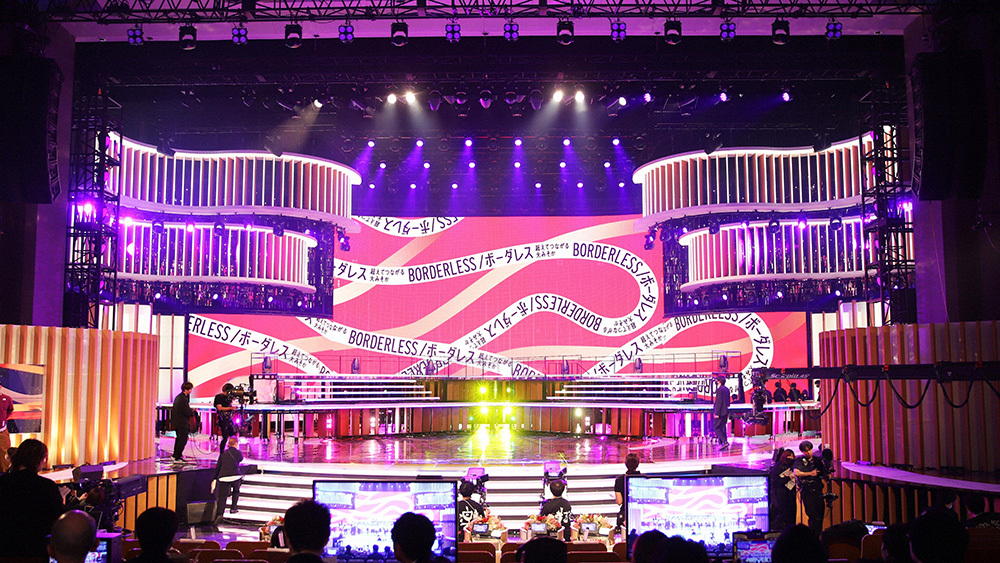Note: This website was automatically translated, so some terms or nuances may not be completely accurate.
NHK held an information session on its sustainable content production initiatives.
NHK held briefings on environmentally conscious content production on June 4 and 11, during Environment Month.

NHK aims to achieve carbon neutrality by 2050 and has set a target to reduce CO2 emissions by 50% compared to fiscal year 2018 levels by the end of 2030. The organization is committed to promoting sustainability not only in its organizational structure and as a media outlet disseminating information, but also in its content production. The briefing introduced specific initiatives implemented within programs.
<The Red and White Song Contest sets have also changed dramatically over the past 30 years>
The Red and White Song Contest celebrated its 74th edition last year in 2023. While the program features singers and artists of various generations performing on dazzling sets each year, focusing on the sets themselves reveals that LED walls were first introduced in 1999 for the 50th edition. By 2007, these LED walls enabled diverse visual effects. Until the mid-2010s, all sets were discarded after a single use. Now, the 3Rs (Reduce, Reuse, Recycle) are rigorously implemented. Sets used in the 2023 Red and White Song Contest are actually being reused for other programs and events.

<Major Revolution in Taiga Drama Filming Methods>
Last year's Taiga drama, "What Will I Do, Ieyasu?", reportedly featured over 80% of its footage created through virtual production. By utilizing LED walls in virtual production to bridge the real world with the fictional world, it not only achieved footage resembling location shoots but also enabled scenes and worlds impossible to capture on location. The introduction of virtual production has reduced setup time, shooting days, costs, and weather risks, enabling highly efficient and sustainable filming. Utilizing LED walls and LED lighting actually reduced average weekly power consumption by 20% compared to traditional incandescent lighting methods. Moving forward, quality will be enhanced by further evolving the combination of CG assets and real elements.

For the currently airing "Hikaru Kimi e," LED walls weren't used due to overlapping filming schedules with other programs, but the set design incorporates environmental considerations. While recreating beautiful Heian-period architecture, each structural component—like pillars—is lightweight and modularized with standardized dimensions. This reduces both costs and assembly time, allowing the set buildings to be rebuilt in just 3-4 days. Furthermore, waste is meticulously sorted, with efforts made to minimize disposal through reuse and recycling.

<A New Future in Production Pioneered by Environmentally Conscious Content Creation>
These initiatives not only contribute to the environment and reduce costs but also enhance efficiency and save time, potentially transforming how performers and staff work. Furthermore, they expand creative possibilities by enabling filming in locations and creating worlds impossible with traditional location shoots, thereby elevating production quality. Beyond this, utilizing virtual production to recreate historical eras of the regions where works are set could foster local pride and encourage people to reexamine Japan's history and culture.
Sustainable content production generates diverse benefits, signaling the entertainment industry's shift toward sustainability.
Was this article helpful?